Chandeliers, Toilets & More Made of Reclaimed Bombs
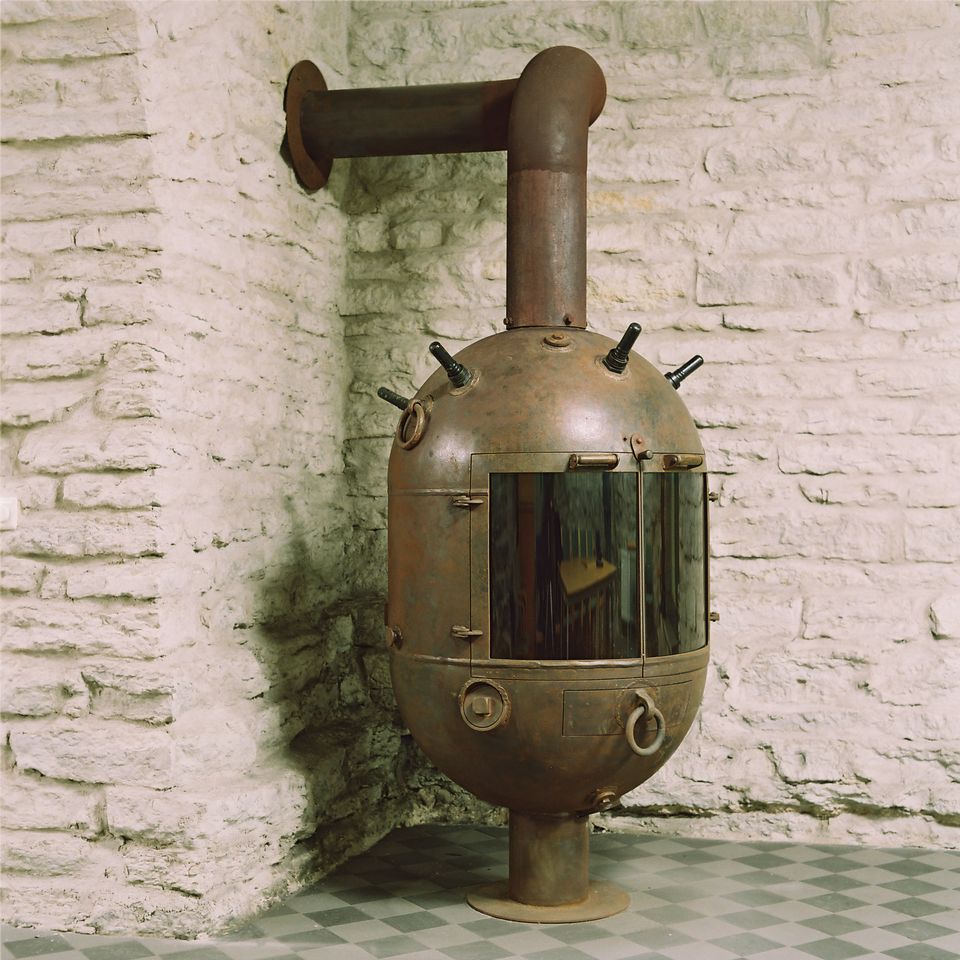
If you tuned in last time, you may remember that chairs, beds and desks are all fair game when it comes to recycling aged nautical mines … but beyond furniture, all kinds of built-in fixtures and one-off furnishings are possible, too.
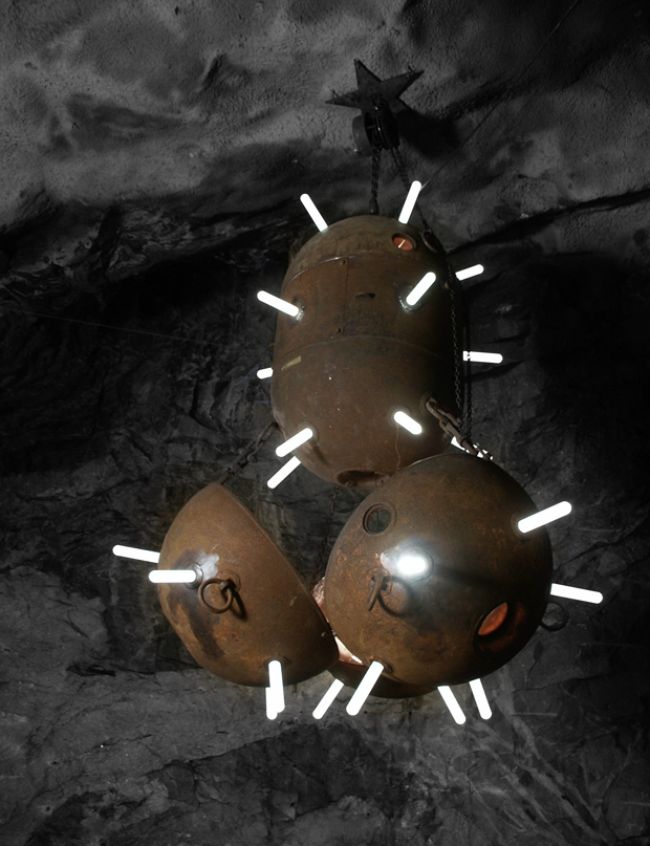
Marine Mine started two and a half decades ago, deconstructing and reconstructing abandoned bombs recovered from the shores of Estonia. From a steampunk chandelier to an industrial toilet enclosure, rolling chair, coffee table and stand-alone dresser, here are some more of their marvelous (or is it monstrous?) refab creations.
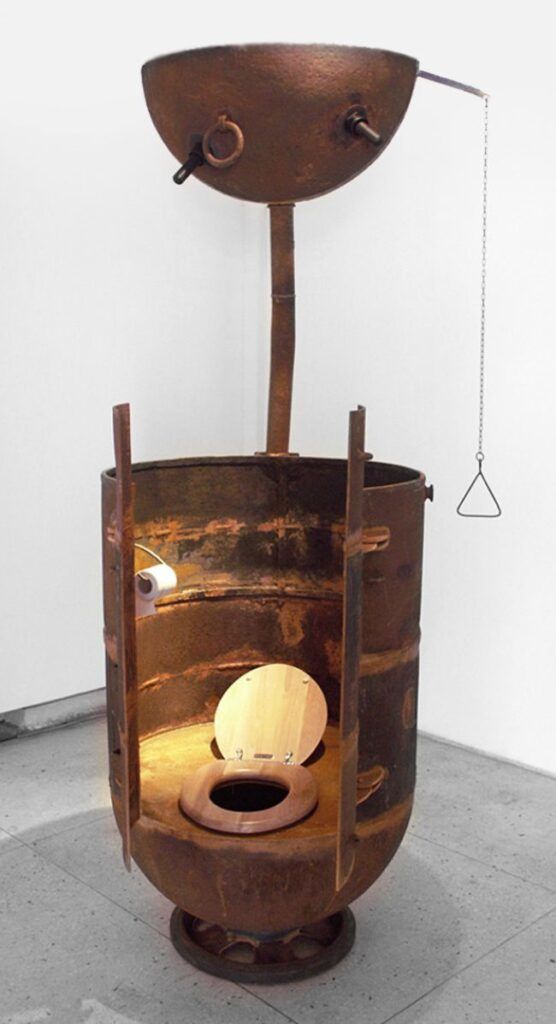
“The frame of the artpieces is a historical deep-sea mine of AGSB-type, made in Russia in 1942. It was a big galvanic deep-sea mine, equipped with “Blok” device and two contact electro-magnetic antennas. The upper antenna was kept steady by a buoy. The mine was used to fight submarines. It was still manufactured in the 50-ies”
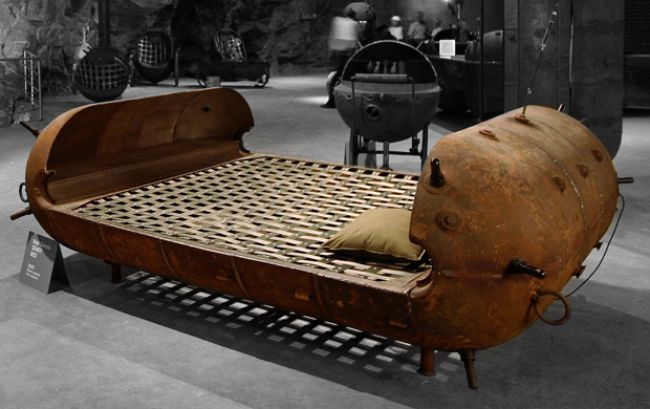
The signature “horns” still visible on the outside of this decommissioned ordinance are made of soft lead and once contained a glass ampule of asset that, when triggered by a passing boat or ship, caused an explosive chain reaction.
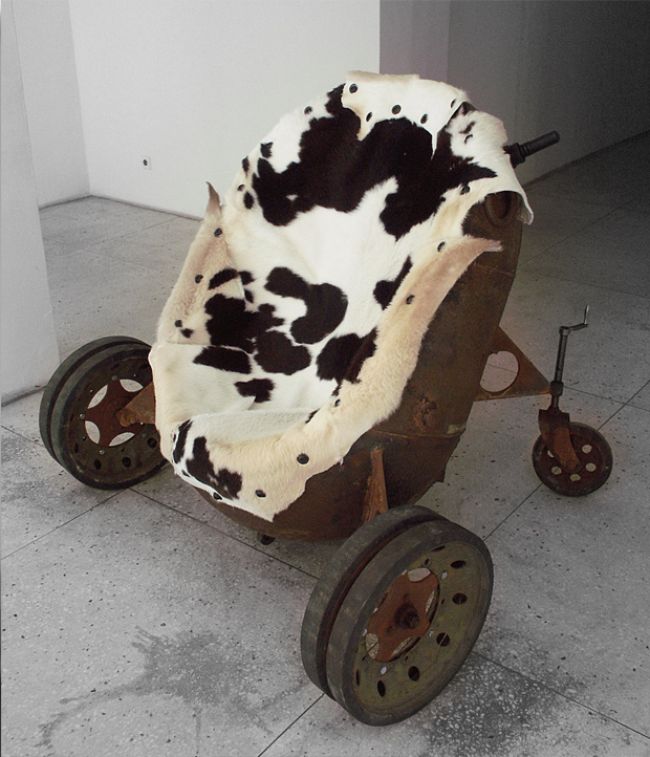
Fabric and leather straps and padding are buckled into sliced-open voids, create flexible support for seating elements.

Aquariums, fireplaces, bar cabinets and and coffee tables have strategic glass panels, inserts and tops as required too.
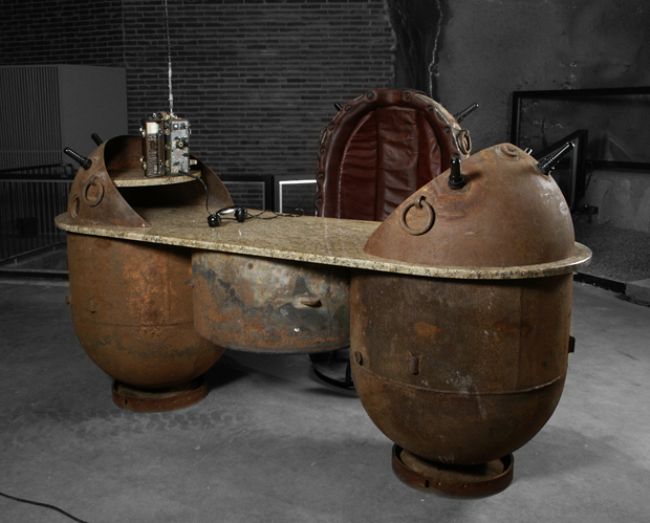
Certainly not made to fit just any style, some of these are more suitable to a standard home than others may be – a few might even be mistaken for freshly-made furnishings, but the best show signs of wear, tear and a near miss with a watery war.

About the artist:
“Mati Karmin has already 25 years been one of the personalities in the Estonian sculpture. His career as an artist is characterized by an intense and remarkably versatile activity.Like many of his contemporaries, the representatives of so-called 1980s generation in the Estonian art, Karmin received professional training in the Estonian State Art Institute, which was thorough, yet traditional, not to say conservative according to the international criteria. During his study, Estonian sculpture was predominantly figurative and employed traditional materials like stone and bronze.”




